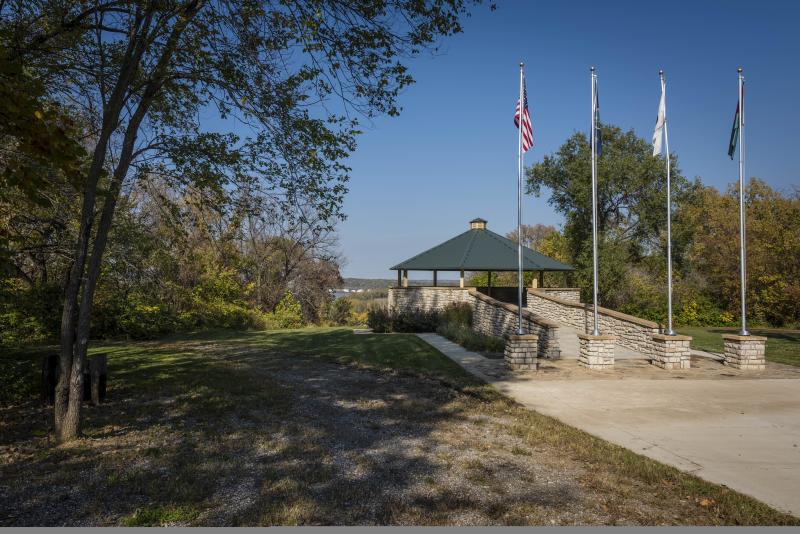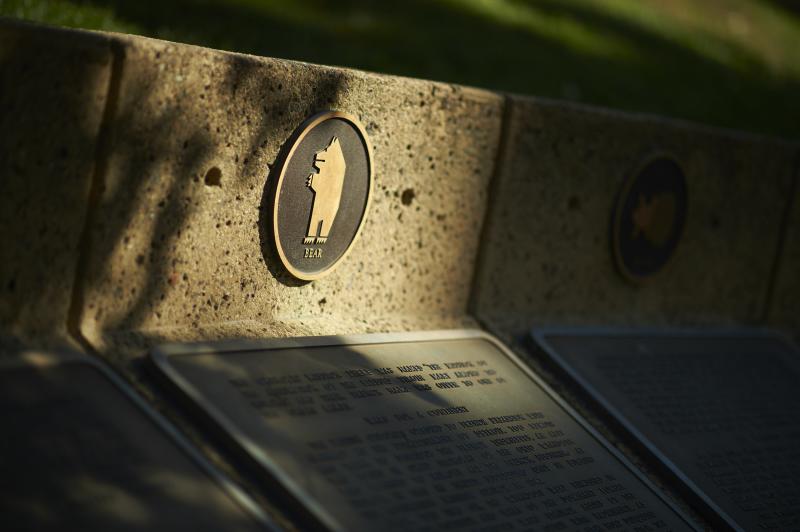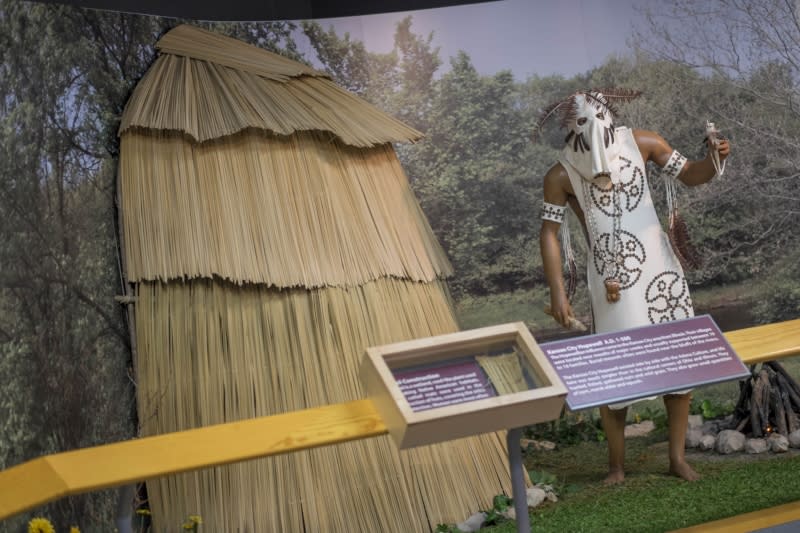Finding bits of Americana among the rich history of Kansas City, Kansas
Since becoming a state in 1861—not quite a hundred years before I was born—Kansas City, Kansas has packed a great deal of history and heritage into the last century and a half. As a couple of dedicated history buffs, my husband Raymond and I were excited to visit the city and check a few items off ye olde “historical” bucket list. We especially looked forward to getting off the typical tourist path and exploring the Freedom’s Frontier National Heritage Area, where we could learn more about the struggles for freedom in eastern Kansas and western Missouri. We had only a couple of days to pack everything in. So, I put together a guide that would make the most out of our 48 hours and then we did exactly that.

Day 1: THE QUINDARO OVERLOOK
Quindaro’s serene vistas overlooking the scenic Missouri River Valley with its spring-fed streams, picturesque flowers and bountiful wildlife are a welcoming sight after a long trip. The remnants of stone-and-brick foundations are a signpost reminding us that more than a century ago, Quindaro was an important stop on the historic Underground Railroad—one of the first ports of entry for free soil immigrants.

A life-sized statue of Kansas abolitionist John Brown stands amid the remaining cornerstones of the famous Western University, the earliest school for African-Americans west of the Mississippi River and the only one ever to operate in the state of Kansas.
Raymond and I stood in silence on the stone platform, trying to imagine the thoughts and emotions that families would have experienced as they set foot onto this same ground. They must have been filled with hope that after their long and harrowing journey, they may now have the freedom to seek peace for their future and education for their children.

QUINDARO UNDERGROUND RAILROAD MUSEUM
To learn more about these families’ journeys, we headed over to the Quindaro Underground Railroad Museum, located inside the Vernon Multi-Purpose Center. The building has gone through many iterations. It was once the Vernon School—originally known as the Colored School of Quindaro—as well as the Vernon Community Center, and it is now on the National Register of Historic Places. Inside, the Quindaro Underground Railroad Museum displays everything from photographs to historic clothing to maps that chart out other Underground Railroad sites in the area. Seeing the routes that the escaping slaves took reiterated the dangerous risk that they—and those helping them—took to gain their freedom. It was interesting to learn about the cooperative efforts of the Native Americans, whites and free blacks working together on the Underground Railroad as well as to learn about the discovery and exploration of the Quindaro Ruins.

Day 2: WYANDOT NATIONAL BURYING GROUND
The Wyandot National Burying Ground, also known as Huron Indian Cemetery, is a Native American burial ground with a controversial past. Raymond and I went to the site with a sense of reverence both for the people who were buried there as well as their descendants who have fought to keep the cemetery sacred. Founded in 1843 after the forced displacement of the Wyandot Nation, the cemetery became the final resting place for many Native Americans. The exact number is unknown as there is very little documentation on who is buried there. For more than a century, the cemetery was the subject of much controversy between those who wanted to sell it for redevelopment and those who wanted to keep it as a sacred site.
In 2016, it was named as a National Historic Landmark. Only a small number of the graves have markers, but Raymond and I found the graves of Lyda, Helena and Ida Conley, sisters who were integral in keeping the cemetery from being destroyed. They actually lived there in a shack to fend off attempts at commercial expansion into the area. Because of their efforts, they are still considered some of Kansas City’s original female trailblazers.

GRINTER PLACE STATE HISTORIC SITE AND WYANDOTTE COUNTY HISTORICAL MUSEUM
Visiting the Grinter House felt very much like we had stepped back into frontier life. The farmstead that was home to Moses and Annie Grinter overlooks the famed Delaware Crossing on the Kansas River. Moses operated a ferry and trading post there, trading furs with Native Americans and travelers alike. Annie, a Lenape (Delaware) Indian whose people were relocated to the Fort Leavenworth Indian Agency in the early 1830s, married Moses and together they built a log cabin. In 1857 they built the two-story brick house that is preserved today and is the oldest home in Wyandotte County.

Just down the road from the Grinter House is the Wyandotte County Historical Museum. The museum’s galleries hold exhibits displaying Native American artifacts that were uncovered right in town near 61st Street and Leavenworth Road. Folks can also find archaeological items from the three immigrant tribes of Wyandotte County as well as books, photographs, journals and more than 75,000 artifacts, including items that originated from the Hopewell culture more than 3,000 years ago.

LEWIS & CLARK PARK AT KAW POINT
To finish off our trip, Raymond and I headed over to Lewis & Clark Park at Kaw Point—a gorgeous riverside spot—to take in the Kansas City skyline. Situated at the confluence of the Kansas and Missouri rivers, the park is surrounded by the beauty of wildlife, wildflowers and wooded trails. We felt like we had escaped from the hustle and bustle of city life. I could almost imagine myself alongside Lewis and Clark back in 1804 as they pulled onto the banks where the Kansas and Missouri Rivers meet. They camped for three days at Kaw Point while their team took time to rest, repair their boats and explore the surrounding wilderness. We channeled our inner explorers and strolled around the trails before ending the day with a picnic.
There’s something sobering, yet exhilarating, that happens when you are able to peel back the centuries and step into the shoes of those who’ve walked the same ground before you. Kansas City, KS has so much rich culture and history that a 48-hour tour merely skims the surface. There is always another piece of history to uncover.
Guest Blogger

